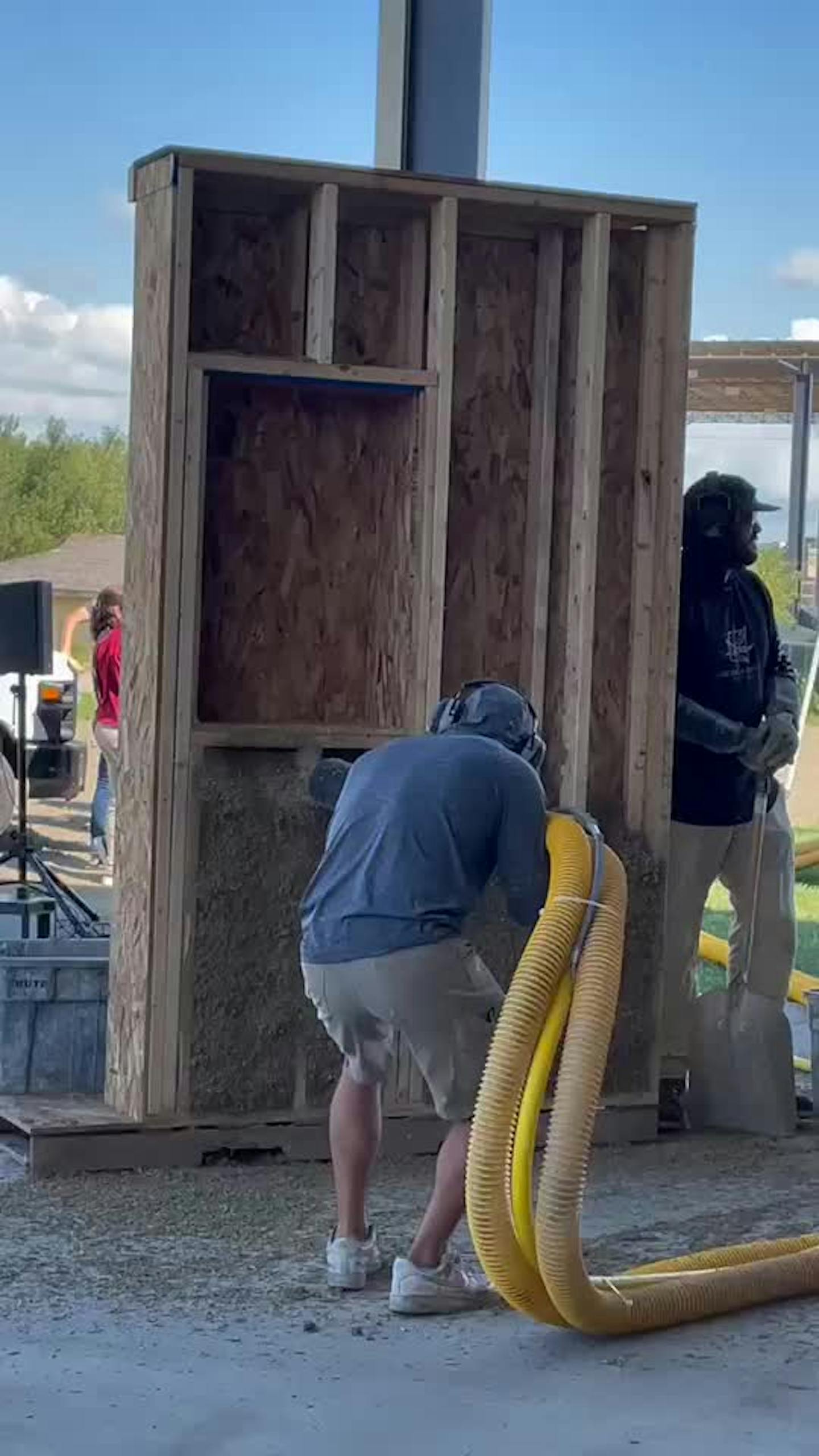MORTON, MINN. – Eight-foot-tall stalks of hemp swayed in a field on the prairie here, ready for harvest. But these plants won't get anyone high. Instead, they'll be turned into hempcrete, a building material that members of the Lower Sioux Indian Community hope can solve a housing shortage.
The Lower Sioux Community opened a $2.3 million facility to process industrial hemp in Morton on Thursday. The 10,000-square-foot facility will process hemp grown by farmers on the reservation and turn the woody stalks into building material for homes.
Joey Goodthunder, a tribal member, said he mostly farmed corn and soybeans before getting interested in hemp five years ago. Hemp comes from the same cannabis species as marijuana, but Goodthunder's plants are bred to have less THC.
"No, you don't get high when you walk through the fields," Goodthunder said, shortly before mounting his tractor and mowing down the field of hemp stalks.
Goodthunder said he hopes the Lower Sioux Indian Community's industrial hemp project can help alleviate a housing shortage of about 100 homes on the reservation. The tribe completed its first hempcrete house, a duplex, this summer, and the first two occupants moved in last week. The house is believed to be the first of its kind in Minnesota.
"How cool is it that I plant the seed and I see it going into a wall for homes here?" said Goodthunder, hemp coordinator for the tribe.
At the industrial hemp facility's opening Thursday, a worker sprayed hempcrete into a wooden housing frame, using a tool that looked much like a leaf blower. The hempcrete, which looked like sawdust but was wet to the touch, started to clump together in the wall. When it's dried, the material looks much like particle board.
"It is super strong," said Danny Desjarlais, hempcrete construction project manager for the Lower Sioux Community. Desjarlais, 39, said he has worked in construction for much of his life. He said he's been obsessed with hemp, which he believes is healthier for the environment than current building materials, for three and a half years.
Hempcrete is made from the woody cores of the hemp stems, which are broken into chips and blended with a lime-based binder and water. The Lower Sioux Indian Community plans to have its hands in all aspects of the hemp process — growing, processing, building.
The facility's opening drew interest from farmers in neighboring communities. Eric Wanna, a member of the Sisseton Wahpeton Oyate from South Dakota, said he's considering growing 500 acres of hemp next year. If he does, he'll bring the harvest to the facility in Morton. "Our most difficult issue with hemp is processing," Wanna said, saying that there are not many places where farmers can turn their crops into something customers will buy.
Homeowners have reached out to the Lower Sioux Indian Community asking how they can buy hempcrete to build homes, Desjarlais said.
However, the industrial hemp facility will most likely be unprofitable for a long time, and Desjarlais acknowledged that the effort was probably "ahead of the market."
The community's efforts have been buoyed by federal grants for building housing at the reservation. Desjarlais said government grants will help the project survive until customers emerge.
"That's the goal, really: rebuild our community," he said. "And then if we can help other communities, that's a bonus."
U faculty and students fear budget cuts and tuition hikes will reduce staffing and enrollment

New report details how to improve MN's foster care system

Four arrested, no one injured in fighting and shooting following Burnsville High School graduation

One man dead in shooting Friday outside Northtown Mall in Blaine

